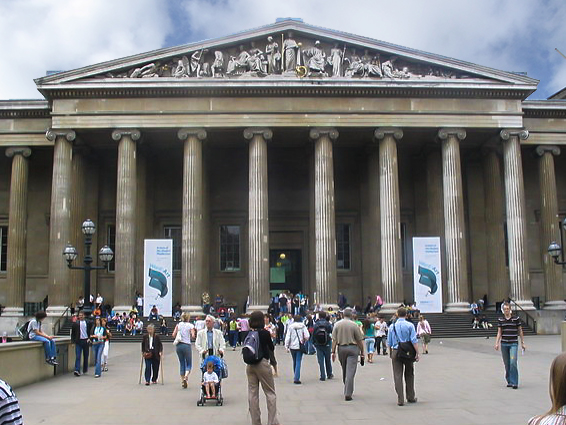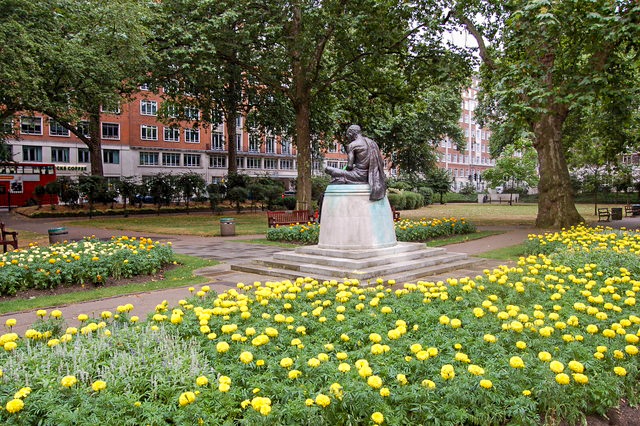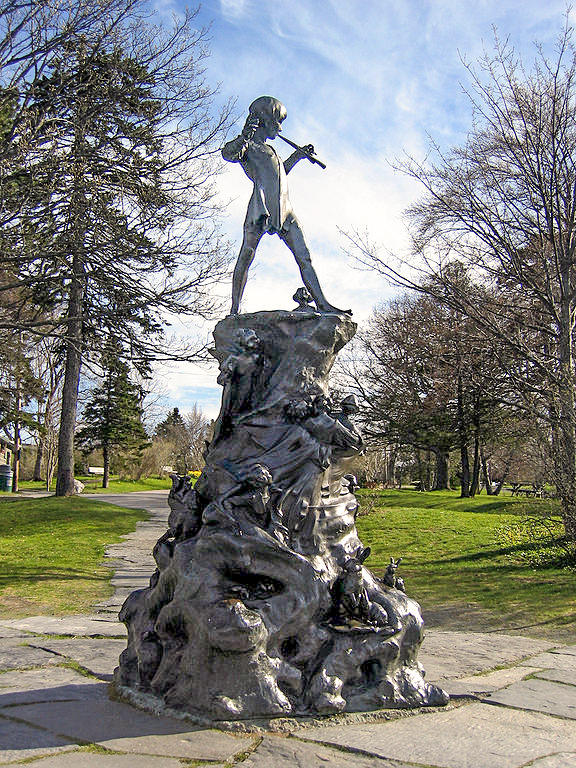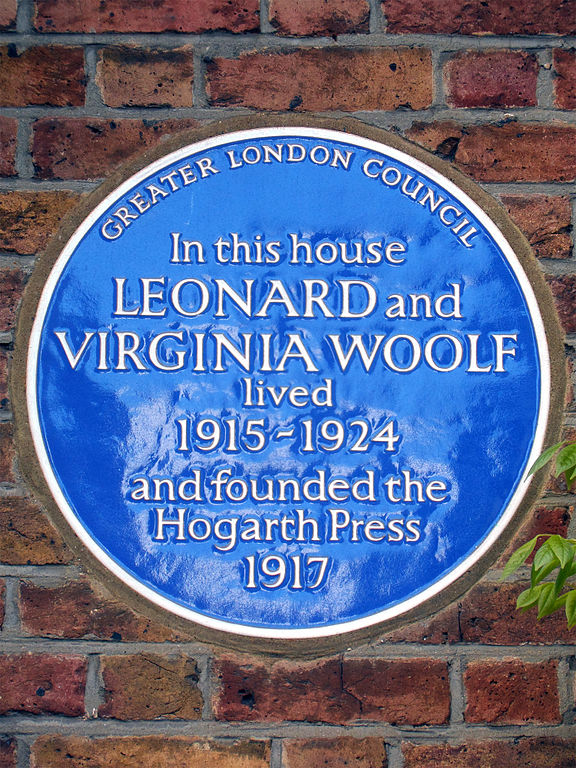Bloomsbury in London has, for centuries, been a mecca for influential writers from across the world looking for both inspiration and a social life that would lead to success for their work.
“It is not the walls that make the city, but the people who live within them.” (George VI)
As a London tourist, Bloomsbury is a diverse area where you could spend time wandering the famous shopping streets before taking in the wealth of sights and attractions that appeal to visitors all year round. With world renowned museums on your doorstep, many of which highlight the creative talents of this area, staying in one of the many Bloomsbury hotels may be the icing on the cake for many literary fans.

Welcome to the British Museum in Bloomsbury (photo credit: British Stormnight licensed under GFDL via Wikimedia Commons)
Why Bloomsbury?
What attracts people to this area? Perhaps it is the fact that the buildings of Bloomsbury, regardless of how modern the insides may now be, have been able to retain a grand and period charm that individuals now crave. Still popular with the upper classes today this is an area that any up and coming writer would want to live in.
About the Writers of Bloomsbury
At the start of the 20th century, a small group of artists and intellectuals who lived around the area would collectively meet to discuss anything from politics to philosophy on a regular basis. Over the course of time this had led to more prominent authors moving to this area of the city.
So who were these authors where did they reside?
#1 Virginia Woolf
As a significant literary figure of the 1900’s, the Modernist wrote many novels and lengthy essays her most famous works include Mrs Dalloway (1925), To the Lighthouse
(1927) and Orlando
(1928), plus the book-length essay A Room of One’s Own
(1929).
During her lifetime Woolf lived in not one but five different houses around Bloomsbury including: 46 Gordon Square, 29 Fitzroy Square, 38 Brunswick Square, 52 Tavistock Square and finally 37 Mecklenburgh Square; she really was the queen of Bloomsbury at the start of the century.
If you are a fan, after taking a peek at each of her properties why not take a wander around Tavistock Square, to enjoy the gardens and take in the scenes that supposedly inspired her writing.

Tavistock Square, Bloomsbury London
#2 Charles Darwin
Once known as 110, 12 Upper Gower Street was the first home of Charles and his wife Emma. Whilst he is fore mostly known as a scientist no-one can forget his written work especially The Origin of Species which is considered to be the foundation for evolutionary science.
#3 Dorothy L. Sayers
Probably best known for her crime writing and lead sleuth, Lord Peter Wimsey, Sayers is still as popular today as she was when she was writing during both World Wars. Living in Bloomsbury, at 24 Great James Street to be precise, clearly gave her inspiration, even one of her main characters Harriet Vane lived in Bloomsbury.
#4 William Butler Yeats
Even the Irish fall in love with the ‘melancholy’ of London. Whilst Yeats was living at 18 Woburn Buildings he became a dramatic writer, so much so that he went on to win the Noble Prize for Literature in 1923.
Today, Wolburn Walk is an attraction pedestrian-only shopping area close to Euston Station. The beautifully preserved Dickensian fronted buildings are now home to bookshops, galleries and restaurants making it a wonderful place to visit.
#5 J.M.Barrie
Grenville Street was not only the home of J.M.Barrie it was also immortalized as the Darling family home in Peter Pan. After being educated in Scotland Barrie moved to London where he dedicated his waking days to becoming a great writer.
Like many other authors, his inner circle was made up of world-class literati including George Bernard Shaw, H.G. Wells and Thomas Hardy.
If you are a fan of Peter Pan don’t forget to head to Kensington Gardens and the interactive statue of the infamous child that never wanted to grow up.

Peter Pan: The boy who refused to grow up
#6 Charles Dickens
48 Doughty Street will forever be remembered as the great writer’s home after becoming a London attraction visited by thousands each year. Today, not only can you wander the streets in search of Dickens’s haunts you can also peruse the rare books, paintings and personal possessions that belonged to the author whilst enjoying the surroundings of his one-time family home.
Whether you are a one-time Dickens fan thanks to a famous festive Christmas story or a fully fledged member of the Dickens Fellowship, Bloomsbury is central to this author’s history.
As you walk in the footsteps of these exceptional writers you will begin to see that Bloomsbury has been transformed into a vibrant literary neighbourhood. So once you have wandered around, checking out the countless historic blue plaques that litter this area why not take refuge in one of the many coffee shops or bookshops.

The historic blue plaques of Bloomsbury
Have you got a favourite bookstore or coffee shop around the Bloomsbury area? Let us know, we would love to visit for ourselves.





This is wonderful. I am hoping next year to make this visit! I would love to visit. I am a huge reader
I hope you do visit – it’s a great experience!
What a great place full of history. It is good to learn about famous writers
I enjoy seeking out places that were important in history and Bloomsbury definitely holds some great treasures!
These writers sound like they are very smart and talented. I must check out these works
Some of the greatest writers in history have spent time in Bloomsbury!
I didn’t realize so many famous writers lived in Bloomsbury!
I enjoyed researching this article, finding out just how many famous writers use to live in this area!
Thanks for this informative article, the only author I read about was Charles Darwin.
Glad you found it interesting!
I’m amazed how many of those famous people are associated with Bloomsbury. I had no idea where they were from.
Bloomsbury is definitely a hidden treasure for writers!
These are all great writers I’m specially a fan of Dickens I absolutely love the way he writes
Dickens really did master the art of description in his writings!
I would love to go and visit where all those authors once lived. Maybe if/when I can for fill my dream to go to England
England is a haven for writers, both old and new! I hope you realise your dream
How cool! Now I want to take a tour of Bloomsbury
Glad it has given you some inspiration to visit Bloomsbury and explore!
Best of the best writers are represented here. Fantastic list…love them all
These really are some of the best writers of their time.
Wow! Such a wonderful list. Charles Dickens is my all time favorite.
Charles Dickens seems to be an author that generation after generation falls in love with.
Awesome I love to read !! Must check these out.
It is great to hear that others love to read, hopefully as much as I do!
Looks like you had a great time. Never heard some of them.
Some of these are definitely better known than others.
I visited London but I didn’t get the chance to get out of London. I hope some day to explore more.
The great thing about the area of Bloomsbury is that you can visit during a break from your shopping on Oxford Street as it is just around the corner.
I am a huge fan of Virginia Woolf and Charles Dickens. I used Charles Dickens books in my dissertation ‘ the representation of fallen women in Victorian Literature.
Wow, that sounds like a fantastic paper, I bet it would be a really interesting read.
Oh it sounds and looks so beautiful! I can imagine why this place would inspire any writer.
The beautiful buildings alone would inspire me to put pen to paper!
The things you learn reading blogs! Thanks so much for this lesson.
Glad you enjoyed reading this article, and it’s always nice to know that we have given others new knowledge.
Those are all icons. It would be lovely to learn more about them by visiting this museum. They should all be treasured for giving the world such beautiful literature!
The area of Bloomsbury itself does look a bit like a museum with many historical buildings still standing.
So many amazing writers! What a great experience! Would love to make the trip someday.
That is the great thing about London itself, many authors have been drawn to the capital for inspiration.
I have heard of a couple of these writers. I remember them from school long ago.
School is always a great place for introducing people to great writers.
Fascinating read!
I would love to visit, take some photos, browse around and linger for awhile.
I recognize many of these names.
I always find myself lingering in the parks nearby tryign to imagine what it would have been like to live in this area during their time.
Very interesting and nice pics. Makes me want to read more!!
Finding out about authors always makes me want to pick up their books.
I don’t know most of those, but I am sure my husband does. He loves to read
Many of these are older English Writers whih is why you may not have heard of them.